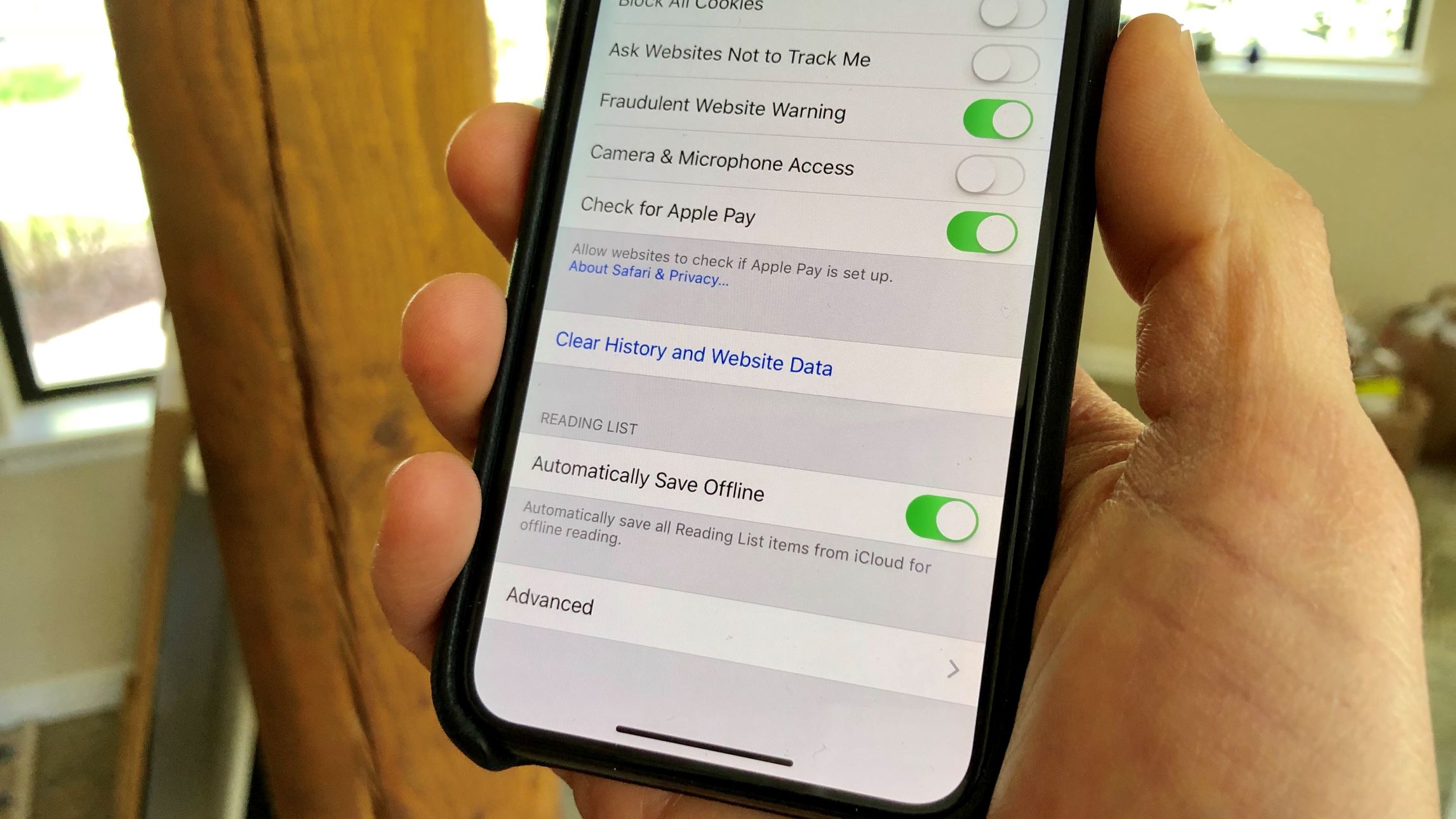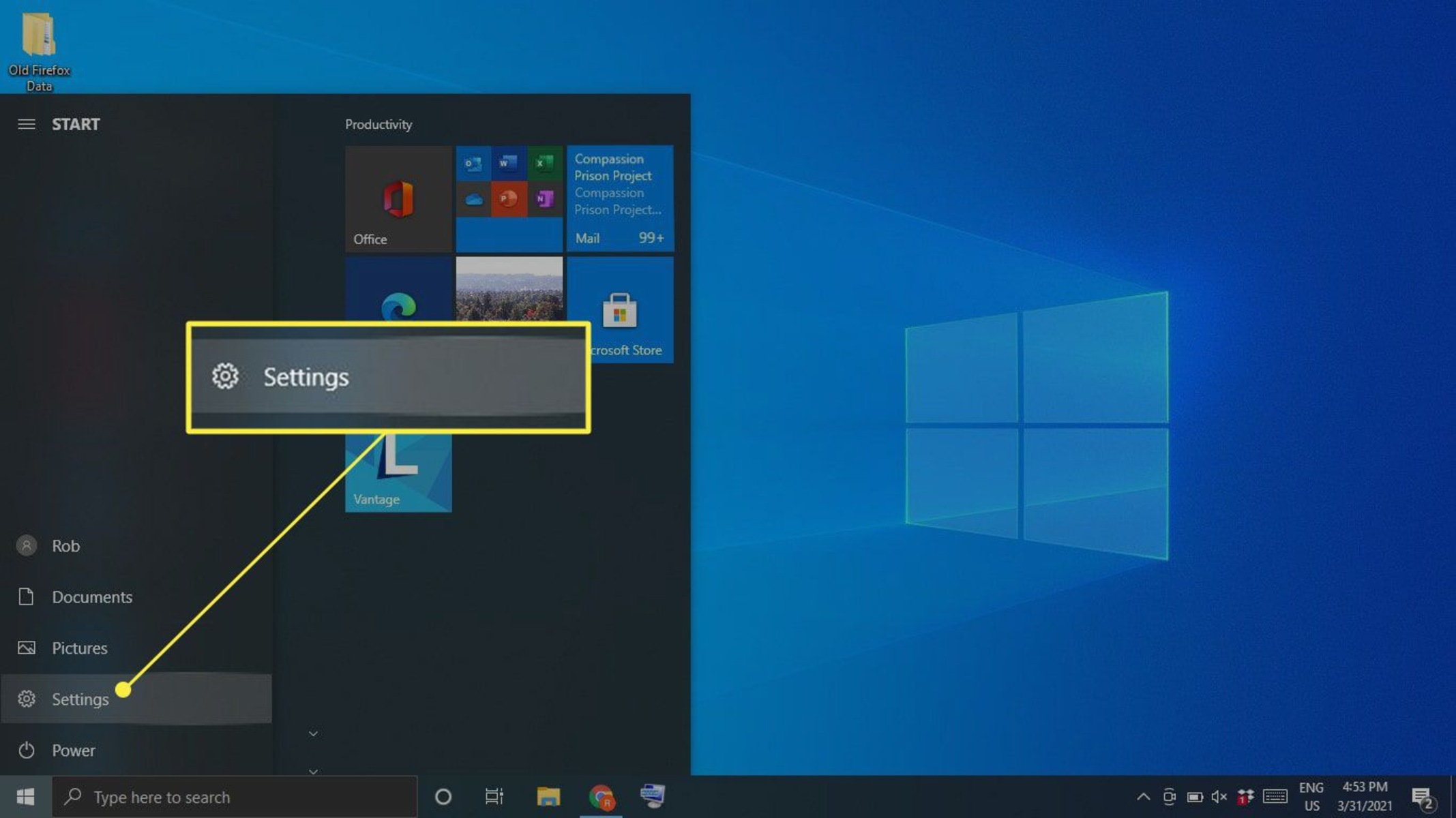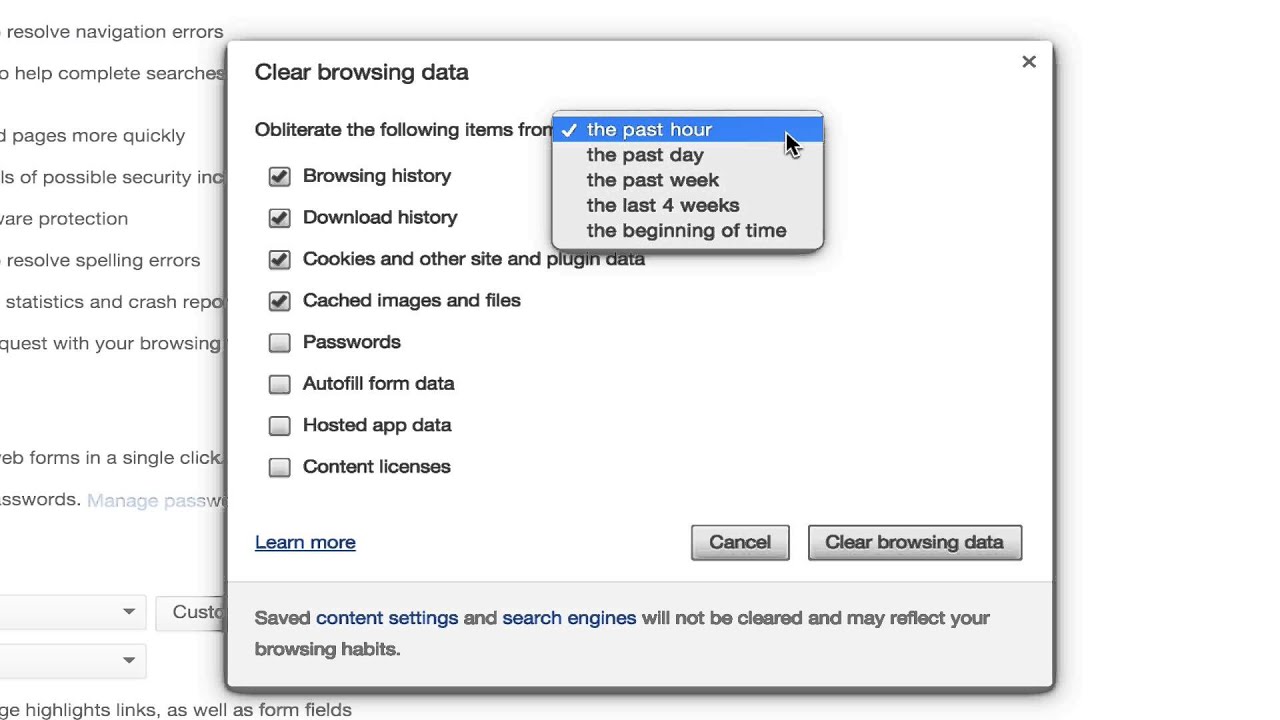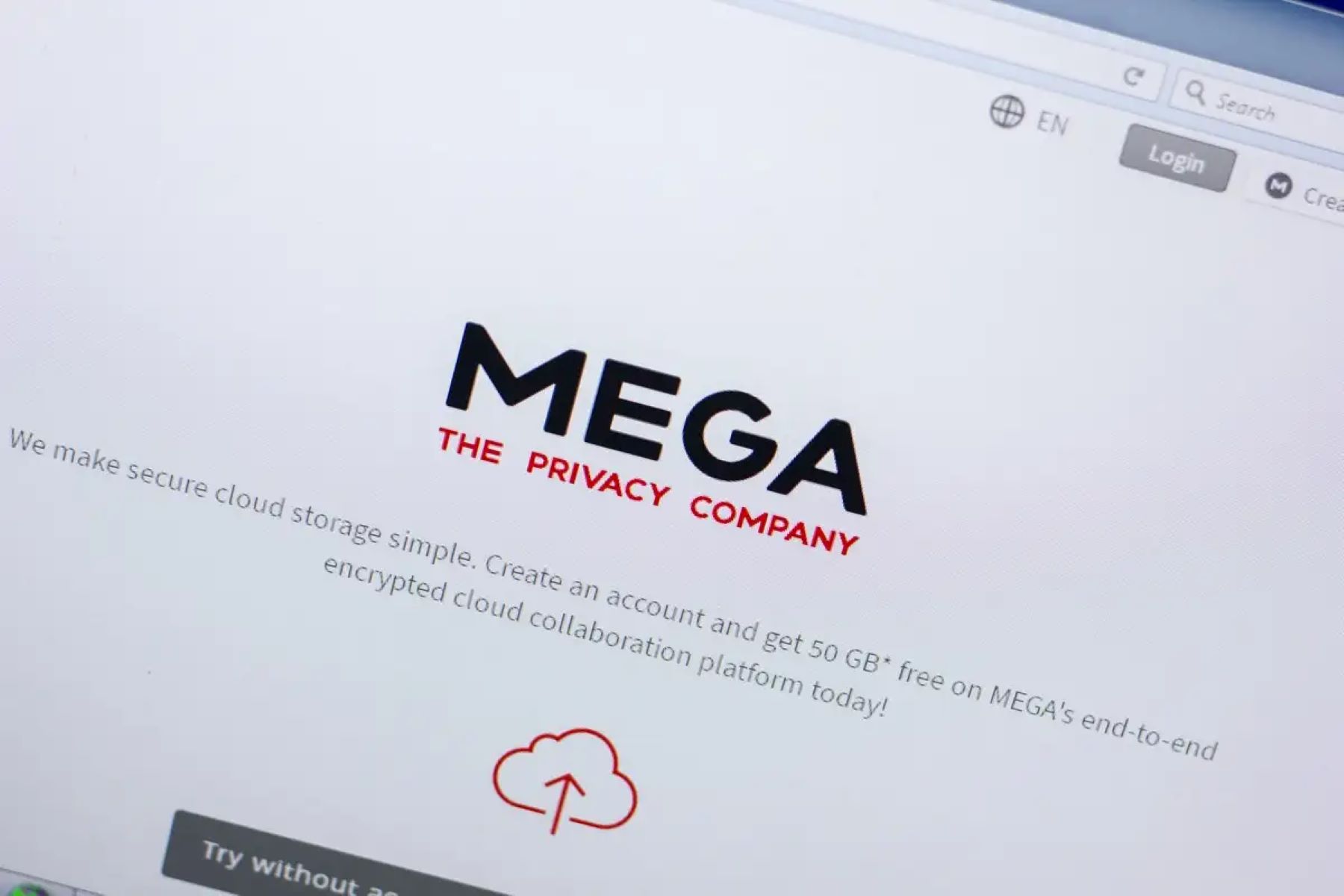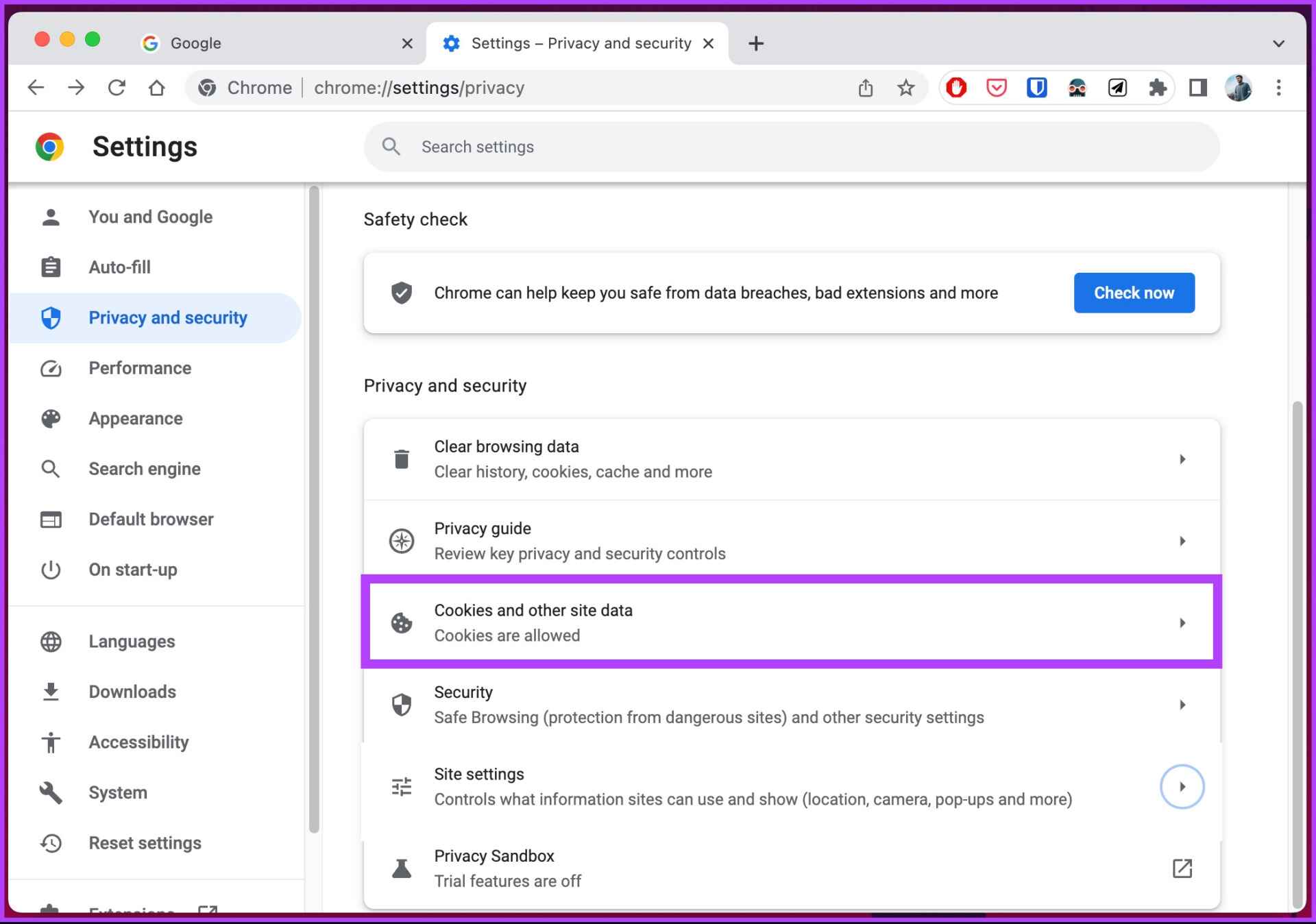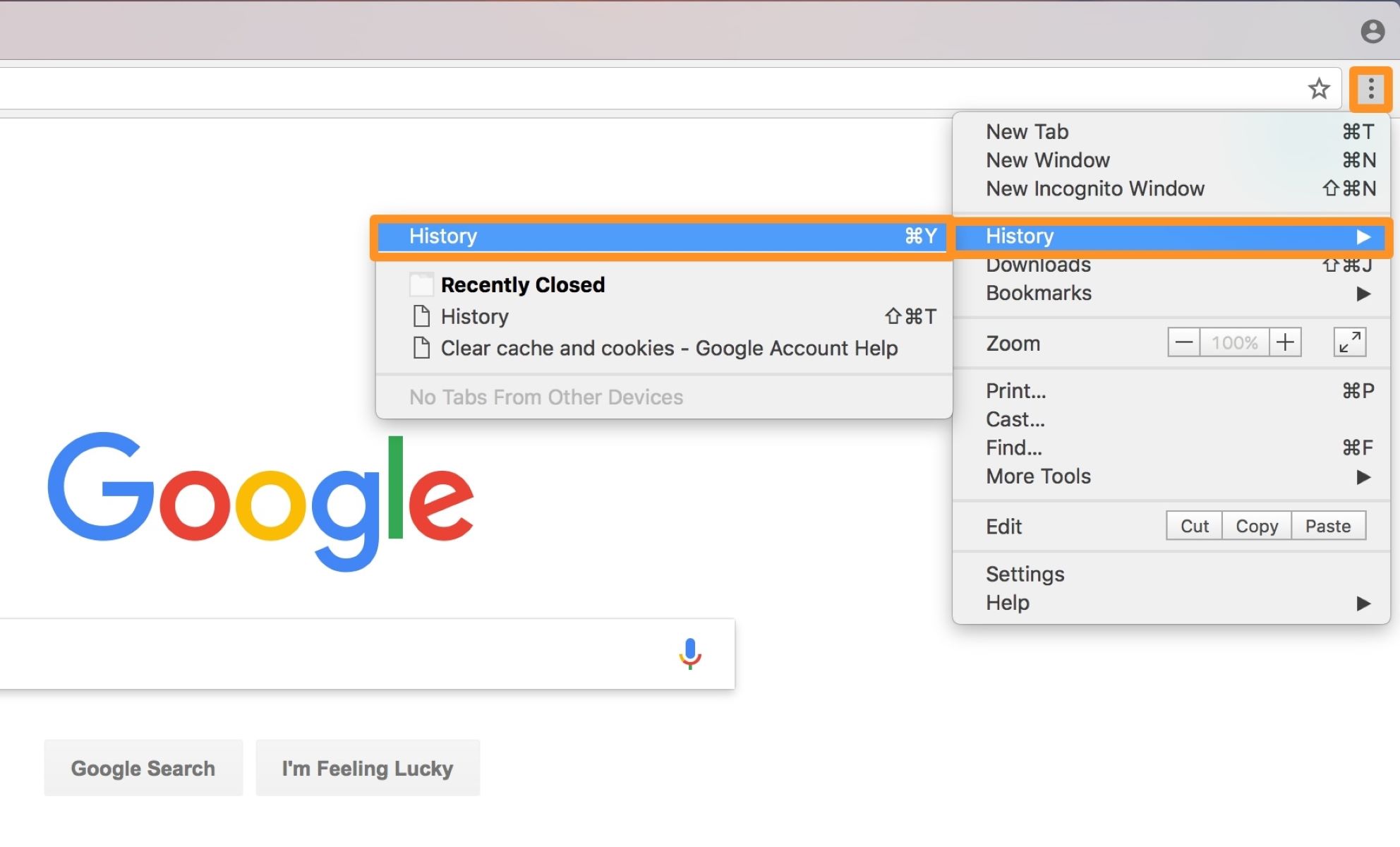Introduction
In the digital realm, web browsing has become an integral part of our daily lives. Whether we're seeking information, connecting with others, or indulging in entertainment, the browser serves as our gateway to the boundless expanse of the internet. As we navigate through this virtual landscape, our browsers diligently store a plethora of data to enhance our online experience. This stored data, known as the browser cache, plays a pivotal role in shaping our browsing encounters.
The browser cache, often likened to a digital memory bank, retains various elements encountered during our web explorations. These elements encompass images, scripts, stylesheets, and other resources that compose the web pages we visit. By storing these components locally on our devices, the browser cache aims to expedite subsequent visits to the same websites, thereby optimizing loading times and overall performance.
As we delve deeper into the intricacies of browser cache, it becomes evident that this feature is not merely a passive repository of data. Rather, it operates as a dynamic tool that significantly influences our browsing encounters. Understanding the inner workings of browser cache empowers us to harness its benefits while being mindful of its potential drawbacks. Moreover, gaining insights into how to manage and clear the cache enables us to maintain a seamless and secure browsing environment.
In the subsequent sections, we will embark on an enlightening journey to unravel the mysteries of browser cache. By delving into its mechanisms, advantages, and limitations, we aim to equip ourselves with the knowledge necessary to navigate the digital realm with finesse. Let us embark on this exploration to uncover the nuances of browser cache and its impact on our online escapades.
What is Browser Cache?
Browser cache, often referred to simply as "cache," is a mechanism employed by web browsers to store web page resources locally on a user's device. These resources typically include HTML pages, images, CSS stylesheets, JavaScript files, and other elements that constitute the content and functionality of websites. When a user visits a website, the browser downloads and stores these resources in its cache, allowing for quicker retrieval and rendering of the same content upon subsequent visits.
The primary purpose of browser cache is to enhance the efficiency and speed of web browsing. By locally storing web page resources, the browser can avoid repeatedly downloading the same content from the web server, thereby reducing loading times and conserving bandwidth. This results in a smoother and more responsive browsing experience for users, particularly when revisiting frequently accessed websites.
In essence, the browser cache acts as a temporary storage facility for web page elements, enabling quicker access to familiar content and optimizing the overall performance of the browsing session. This mechanism is designed to streamline the retrieval of web resources, making the browsing experience more seamless and efficient.
Furthermore, browser cache plays a crucial role in reducing network traffic and server load. By retrieving resources from the local cache instead of the web server, browsers contribute to the conservation of network resources and alleviate the burden on web servers, particularly during periods of high traffic.
However, while browser cache offers numerous benefits in terms of speed, efficiency, and resource conservation, it is essential to recognize that it also has its limitations and potential drawbacks. Understanding the intricacies of browser cache, including its mechanisms, advantages, and shortcomings, is pivotal in navigating the digital landscape with awareness and proficiency.
How Does Browser Cache Work?
When a user accesses a web page for the first time, the browser diligently retrieves and downloads various resources that constitute the page, such as HTML files, images, CSS stylesheets, and JavaScript files. These resources are then stored in the browser's cache, which is essentially a designated storage space on the user's device. The next time the user visits the same web page or navigates to a site that utilizes the same resources, the browser can retrieve these elements from the cache instead of re-downloading them from the web server.
The process of browser cache operation can be elucidated through the following steps:
-
Resource Retrieval: Upon visiting a web page, the browser initiates the process of fetching the necessary resources from the web server. These resources are then stored in the cache on the user's device.
-
Subsequent Access: When the user revisits the same web page or accesses a different page that employs the same resources, the browser checks its cache for the presence of these elements.
-
Cache Validation: The browser verifies whether the cached resources are still valid and have not expired. This is typically determined by examining the metadata associated with each resource, such as the expiration date specified by the web server.
-
Conditional Requests: If the cached resources are deemed valid, the browser can utilize them to render the web page without needing to re-download the content from the web server. However, if the resources have expired or been modified, the browser may issue conditional requests to the server to ascertain whether the cached versions can still be utilized or if updated versions need to be retrieved.
-
Efficient Rendering: By leveraging the cached resources, the browser can swiftly assemble the web page, incorporating the stored elements to expedite the rendering process. This results in reduced loading times and a more responsive browsing experience for the user.
In essence, the browser cache operates as a dynamic repository of web page resources, optimizing the retrieval and rendering of content during subsequent visits. By intelligently managing and utilizing the cached resources, browsers aim to enhance the speed, efficiency, and overall performance of the browsing experience.
Benefits of Browser Cache
The browser cache bestows a myriad of advantages upon users, enriching their web browsing encounters and elevating the efficiency of online interactions. These benefits are instrumental in shaping a seamless and expedited browsing experience, fostering user satisfaction and optimizing the utilization of network resources. Let's delve into the notable benefits conferred by the browser cache:
-
Enhanced Loading Speed: By storing frequently accessed web page resources locally, the browser cache significantly reduces loading times during subsequent visits to the same websites. This expedited loading process enhances user experience, enabling swift access to familiar content without the need for repetitive resource retrieval from the web server.
-
Bandwidth Conservation: Through the utilization of cached resources, browsers alleviate the demand on network bandwidth by circumventing the necessity to repeatedly download identical content from web servers. This conservation of bandwidth contributes to a more efficient utilization of network resources and facilitates smoother browsing experiences, particularly in bandwidth-constrained environments.
-
Improved Performance: The expedited retrieval of cached resources empowers browsers to render web pages more efficiently, resulting in enhanced overall performance. By minimizing the time required to assemble and display web content, the browser cache fosters a responsive and seamless browsing environment, augmenting user satisfaction and engagement.
-
Reduced Server Load: As browsers retrieve resources from the local cache instead of issuing requests to web servers, the burden on these servers is mitigated. This reduction in server load is particularly beneficial during periods of high traffic, as it contributes to the optimization of server performance and the conservation of server resources.
-
Offline Accessibility: Certain web page elements, such as images and scripts, can be cached for offline access. This enables users to revisit previously accessed web pages and interact with cached content even when offline, enhancing accessibility and convenience.
-
Optimized User Experience: The seamless and expedited loading of web page resources facilitated by the browser cache culminates in an optimized user experience. Users benefit from reduced wait times, enhanced responsiveness, and a more fluid browsing experience, ultimately fostering greater satisfaction and engagement.
In essence, the browser cache serves as a catalyst for elevating the speed, efficiency, and overall performance of web browsing. By harnessing the benefits of the browser cache, users can navigate the digital landscape with agility and finesse, reaping the rewards of expedited access to familiar content and optimized utilization of network resources.
Drawbacks of Browser Cache
While the browser cache offers a multitude of benefits, it is imperative to acknowledge its potential drawbacks and limitations. Understanding these drawbacks is crucial in navigating the digital realm with awareness and discernment. Let's explore the notable drawbacks associated with browser cache:
-
Stale Content: One of the primary drawbacks of browser cache is the potential for serving stale content to users. Cached resources may become outdated if the web server updates the content but fails to communicate this change effectively to the browser. As a result, users may encounter obsolete or incorrect information, undermining the integrity and relevance of the browsing experience.
-
Privacy Concerns: The browser cache, by storing web page resources locally, poses potential privacy risks. Cached data, including images, scripts, and other elements, may contain sensitive information that could be accessed by unauthorized parties if the device is compromised. This raises concerns regarding data privacy and security, necessitating vigilant management of cached content.
-
Storage Overhead: As the browser cache accumulates a diverse array of resources from visited web pages, it can consume significant storage space on the user's device. This storage overhead becomes particularly pronounced in the case of devices with limited storage capacity, potentially impeding the performance and functionality of the device.
-
Cache Invalidation Challenges: Ensuring the timely invalidation of cached resources presents a notable challenge. When web content is updated or modified, effectively communicating these changes to the browser cache can be complex. Consequently, users may continue to access outdated content, leading to discrepancies and inconsistencies in the browsing experience.
-
Potential Security Risks: The browser cache, if not managed and cleared diligently, may inadvertently harbor malicious content or scripts. This presents a potential security risk, as cached resources could be exploited to execute unauthorized code or facilitate cyber attacks, compromising the integrity of the user's browsing environment.
-
Inhibited Content Updates: The presence of cached resources may inhibit the seamless delivery of updated content from web servers to users. This can impede the timely dissemination of critical information, such as news updates or real-time data, potentially impacting the accuracy and relevance of the content accessed by users.
In essence, while the browser cache offers compelling advantages, it is essential to recognize and address its potential drawbacks. By navigating these limitations with vigilance and proactive management, users can mitigate the associated risks and optimize their browsing experiences while safeguarding privacy and security.
How to Clear Browser Cache
Clearing the browser cache is a fundamental practice that empowers users to manage their browsing environment, optimize performance, and address potential issues associated with cached content. Whether seeking to resolve display inconsistencies, free up storage space, or ensure the retrieval of the latest web resources, clearing the browser cache is a straightforward yet impactful endeavor. Here's a comprehensive guide on how to clear the browser cache across popular web browsers:
Google Chrome
-
Desktop Version:
- Open Chrome and click on the three-dot menu icon in the top-right corner.
- Select "More tools" and then "Clear browsing data."
- Choose the time range for which you want to clear the cache and select "Cached images and files."
- Click "Clear data" to initiate the cache clearing process.
-
Mobile Version:
- Launch Chrome and tap the three-dot menu icon.
- Navigate to "History" and then "Clear browsing data."
- Select the time range and check the box next to "Cached images and files."
- Tap "Clear data" to clear the cache on your mobile device.
Mozilla Firefox
-
Desktop Version:
- Open Firefox and click on the three-line menu icon in the top-right corner.
- Choose "Options" and navigate to the "Privacy & Security" tab.
- Scroll down to the "Cookies and Site Data" section and click on "Clear Data."
- Ensure that the "Cached Web Content" option is selected and click "Clear."
-
Mobile Version:
- Launch Firefox and tap the three-line menu icon.
- Select "Settings" and then "Clear private data."
- Check the box next to "Cache" and tap "Clear data" to clear the cache on your mobile device.
Safari (Mac)
- Desktop Version:
- Open Safari and click on "Safari" in the top menu bar.
- Choose "Preferences" and navigate to the "Advanced" tab.
- Enable the "Show Develop menu in menu bar" option.
- Click on "Develop" in the menu bar and select "Empty Caches" to clear the browser cache.
Microsoft Edge
- Desktop Version:
- Open Edge and click on the three-dot menu icon in the top-right corner.
- Select "Settings" and navigate to the "Privacy, search, and services" tab.
- Under "Clear browsing data," click on "Choose what to clear."
- Ensure that "Cached images and files" is selected and click "Clear now."
By following these simple yet effective steps, users can efficiently clear the browser cache across various web browsers, ensuring a refreshed browsing experience and optimal utilization of resources. Regularly clearing the cache not only resolves potential issues but also contributes to maintaining a streamlined and secure browsing environment.
Conclusion
In conclusion, the browser cache stands as a pivotal component of the web browsing experience, wielding the power to expedite access to familiar content, optimize performance, and conserve network resources. Throughout our exploration of the browser cache, we have unearthed its multifaceted nature, encompassing both commendable benefits and potential drawbacks. From enhancing loading speed and performance to posing challenges related to stale content and privacy concerns, the browser cache exerts a profound influence on the dynamics of web browsing.
The benefits of the browser cache, including expedited loading speed, bandwidth conservation, and improved user experience, underscore its indispensable role in fostering a seamless and efficient browsing environment. By leveraging the cached resources, users can navigate the digital landscape with agility and finesse, reaping the rewards of optimized access to web content and reduced wait times.
However, it is essential to remain cognizant of the potential drawbacks associated with the browser cache, such as serving stale content, privacy concerns, and storage overhead. Navigating these limitations with vigilance and proactive management empowers users to mitigate risks and optimize their browsing experiences while safeguarding privacy and security.
Furthermore, the ability to clear the browser cache across popular web browsers serves as a fundamental practice, enabling users to manage their browsing environment, address potential issues, and ensure the retrieval of the latest web resources. By embracing the practice of clearing the cache, users can maintain a refreshed browsing experience and contribute to the streamlined and secure utilization of resources.
In essence, the browser cache epitomizes the dynamic interplay between speed, efficiency, and resource management in the realm of web browsing. By understanding its mechanisms, harnessing its benefits, and navigating its limitations, users can embark on their digital escapades with awareness and proficiency, optimizing their browsing encounters while embracing the ever-evolving landscape of the internet.









